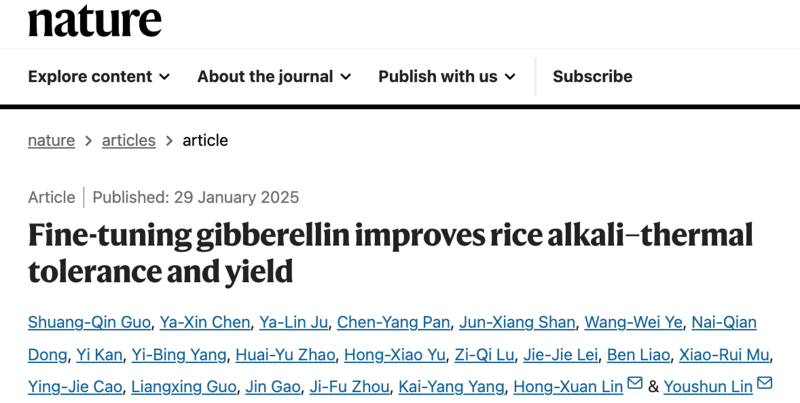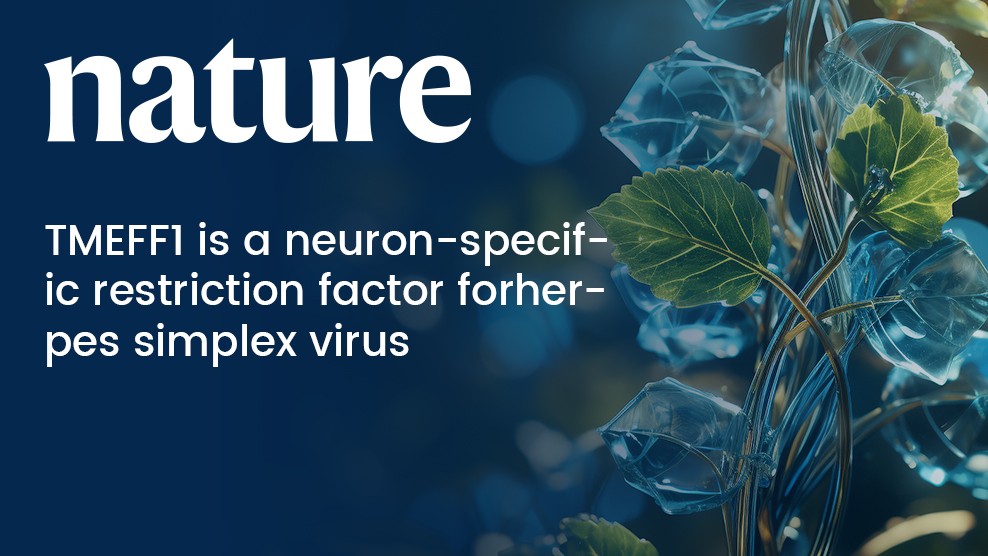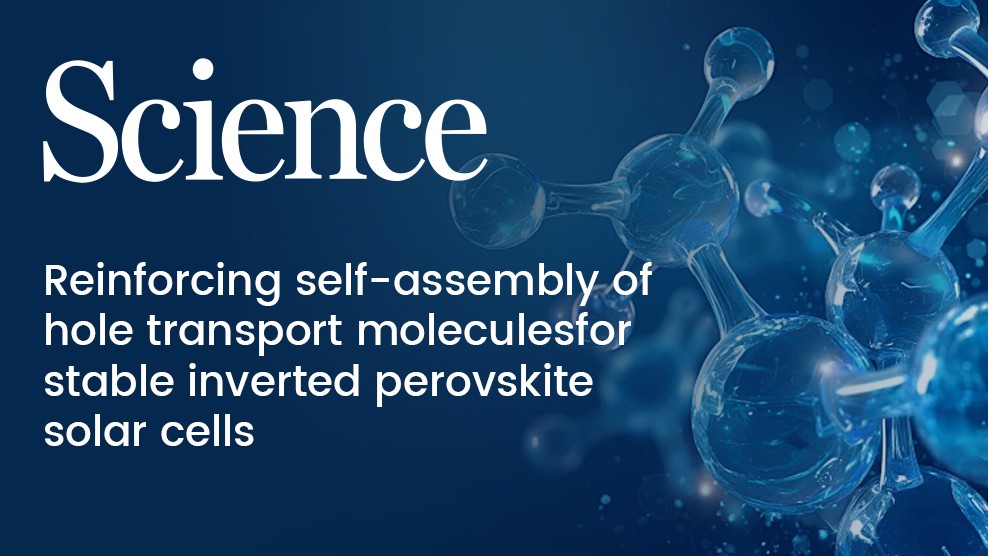In the early morning of January 30, 2025, Beijing time, the research team of Youshun Lin from SJTU and Hongxuan Lin from the Center of Excellence for Innovation in Molecular Plant Science of the Chinese Academy of Sciences collaborated to publish a research paper entitled Fine-tuning Gibberellin Improves Rice Alkali-thermal Tolerance and Yield in Nature. The research results innovatively introduce a new concept: fine-tuning gibberellin to the optimal intermediate level is key to simultaneously improving rice alkali-thermal tolerance and yield. The study also discovered ATT2, a potential “post-Green Revolution” gene, which can fine-tune gibberellin to this optimal level, further enhancing both alkali-thermal tolerance and yield in semi-dwarf Green Revolution rice varieties. These findings provide new strategies to address food security issues caused by global climate change and are important for the development and sustainable use of saline-alkaline land, as well as the future sustainable development of agriculture.

Tracing back to the 1960s, semi-dwarf breeding for rice and wheat was achieved through the regulation of gibberellin concentration or signaling via green revolution genes (Sd1—Semi-dwarf1, Rht1—Reduced height-1), which enhanced their lodging resistance. This achievement, coupled with significantly increased grain yields due to extensive fertilizer application, sparked the “Green Revolution” in agriculture. Semi-dwarf Green Revolution varieties have been widely planted worldwide over the past few decades, helping to ensure food security to some extent, although their environmental adaptability remains relatively low. However, factors such as greenhouse gas emissions, global warming, and intensified soil salinization have led to reduced crop yields. Therefore, there is an urgent need to identify salt-tolerant and thermally resistant genes in crops, elucidate their molecular mechanisms, and further enhance their stress tolerance and yield in existing semi-dwarf Green Revolution varieties to meet the growing demand for food as the global population increases. This is crucial for ensuring China’s food security. The research team has now successfully isolated and cloned new rice alkali-thermal resistance genes, ATT1/2 (ALKALI-THERMAL TOLERANCE 1/2), elucidating their novel regulatory mechanisms for salt tolerance and thermal resistance. These findings propose new solutions to overcome the bottleneck issue of mutually antagonistic stress tolerance and yield in the main varieties of semi-dwarf Green Revolution crops. This represents another major advance in the field of crop resistance to abiotic stress following the team’s successful identification of the thermal-tolerant TT3 molecular genetic module (Science, 2022).
In this study, through large-scale exchange individual screening and identification of alkali and thermal-tolerant phenotypes of more than 30,000 rice genetic materials, two alkali and thermal-tolerant QTLs genes, ATT1 and ATT2, were finally localized and cloned. ATT1/Sd1 and ATT2/GNP1, as a pair of homologous genes, encode GA20 oxidases, which are involved in the control of active gibberellin synthesis; further molecular mechanistic studies show that high concentration of active gibberellins decreases SLR1 (DELLA) protein accumulation, reduces peroxidase activity and active oxygen scavenger enzyme gene expression, and causes excessive accumulation of active oxygen species (ROS) under alkali and thermal stress, causing rice to exhibit an alkali - thermal stress-sensitive phenotype; low concentration of active gibberellins increases SLR1 protein accumulation and interacts with NGR5, through NGR5-LC2 mediated histone methylation (H3K27me3), suppressing the expression of saline and alkali stress tolerance genes (OsNAAT1, etc.) and thermal stress tolerance genes (OsHsfA2d, etc.), and rice would likewise exhibit an alkali-thermal stress-sensitive phenotype. However, at moderate concentration levels of active gibberellins, SLR1 protein is at intermediate levels, balancing the levels of ROS and H3K27me3 methylation, allowing rice to exhibit strong alkaline-thermal stress resistance. It is worth noting that the research team finds that the function of ATT2 is weaker than that of ATT1, so it is more suitable for bioengineering to realize the precise regulation of gibberellin, and further improve the resistance and yield of semi-dwarf green revolution rice varieties, thus ATT2 is expected to become a potential “post-Green Revolution” gene.


